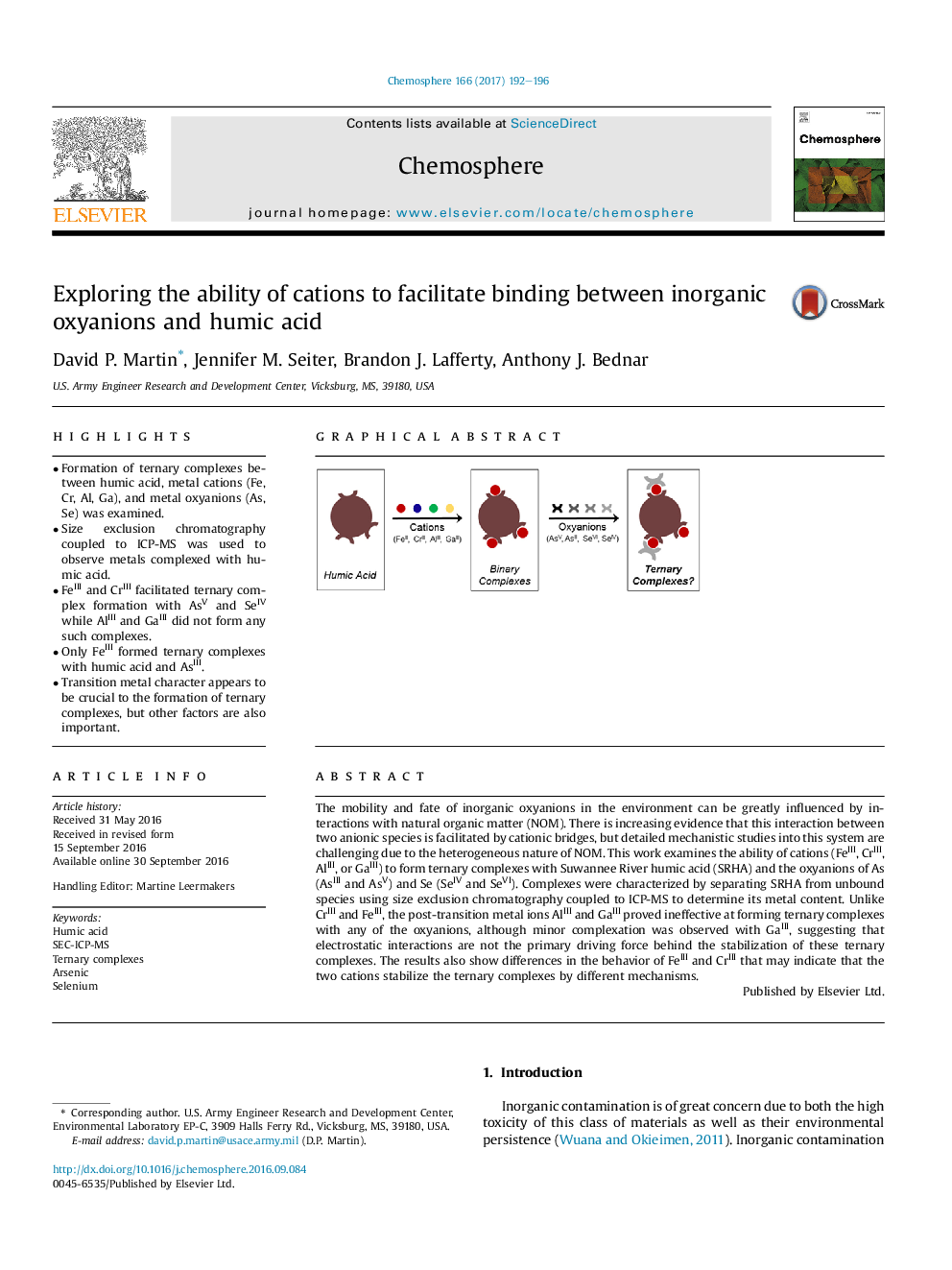| Article ID | Journal | Published Year | Pages | File Type |
|---|---|---|---|---|
| 6306371 | Chemosphere | 2017 | 5 Pages |
â¢Formation of ternary complexes between humic acid, metal cations (Fe, Cr, Al, Ga), and metal oxyanions (As, Se) was examined.â¢Size exclusion chromatography coupled to ICP-MS was used to observe metals complexed with humic acid.â¢FeIII and CrIII facilitated ternary complex formation with AsV and SeIV while AlIII and GaIII did not form any such complexes.â¢Only FeIII formed ternary complexes with humic acid and AsIII.â¢Transition metal character appears to be crucial to the formation of ternary complexes, but other factors are also important.
The mobility and fate of inorganic oxyanions in the environment can be greatly influenced by interactions with natural organic matter (NOM). There is increasing evidence that this interaction between two anionic species is facilitated by cationic bridges, but detailed mechanistic studies into this system are challenging due to the heterogeneous nature of NOM. This work examines the ability of cations (FeIII, CrIII, AlIII, or GaIII) to form ternary complexes with Suwannee River humic acid (SRHA) and the oxyanions of As (AsIII and AsV) and Se (SeIV and SeVI). Complexes were characterized by separating SRHA from unbound species using size exclusion chromatography coupled to ICP-MS to determine its metal content. Unlike CrIII and FeIII, the post-transition metal ions AlIII and GaIII proved ineffective at forming ternary complexes with any of the oxyanions, although minor complexation was observed with GaIII, suggesting that electrostatic interactions are not the primary driving force behind the stabilization of these ternary complexes. The results also show differences in the behavior of FeIII and CrIII that may indicate that the two cations stabilize the ternary complexes by different mechanisms.
Graphical abstractDownload high-res image (131KB)Download full-size image
